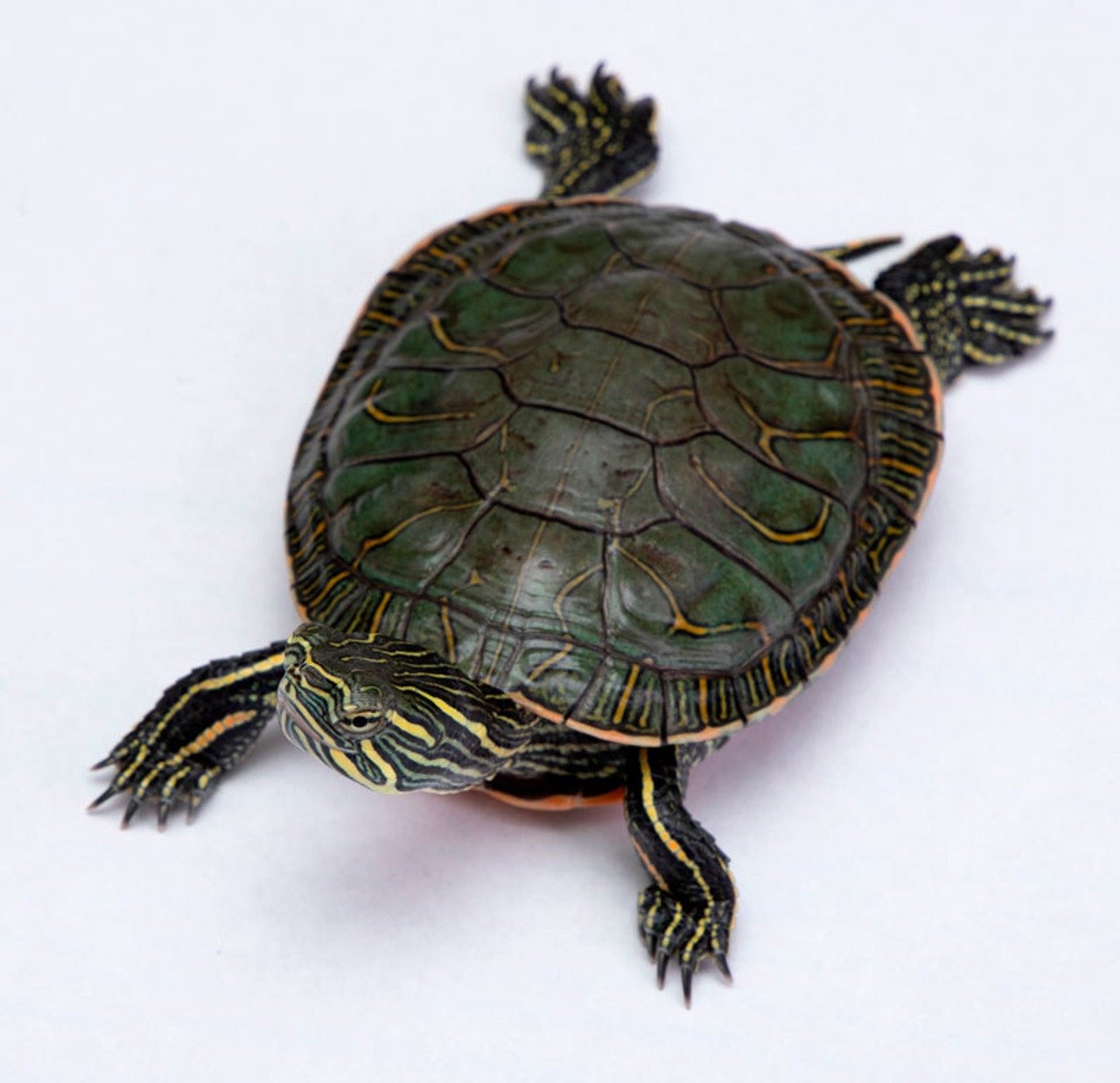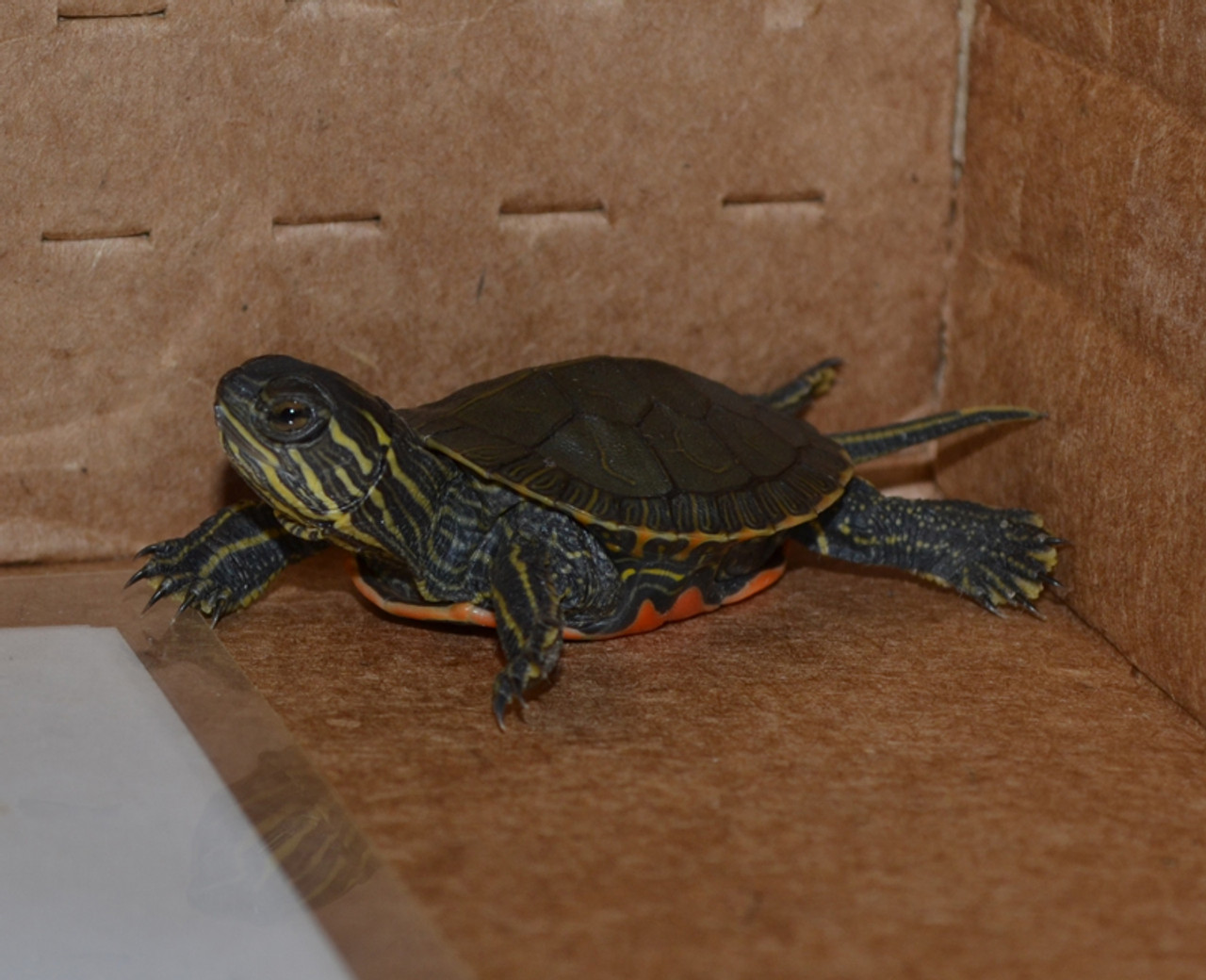Product Description
Hatchling Western Painted Turtle
Age Group: Hatchling
Common Name: Western Painted Turtle
Scientific Name: Chrysemys picta belli
Description: Hatchlings are approximately 1 inch long. Their shell has a mesh-like pattern of distinct lines that fade with age. The top stripe that is present in other Painted Turtle species is either very faint or missing all together. Their bellies have large colorful markings that spread to the edges with red coloration and hues present.
Origin: Western Painted Turtles originate from Western Ontario to British Columbia in Canada and South to states like Wisconsin, Illinois, Missouri, Iowa, Minnesota, North Dakota, South Dakota, Nebraska and Kansas in the United States.
Lifespan: This species has an average lifespan of 15-20 years
Habitat in captivity: Hatchling Western Painted Turtles do well in a 10-gallon startup setup. This will need to be increased over time to 55-gallons for a solitary adult. They are strong swimmers and frequent baskers. Providing them with deep water, live plants and a solid basking area are key to a happy turtle. Other things your turtle will need to do well in your care are:
- UVB Light – Either a Coil Bulb or Mercury Vapor Bulb are required for your turtle to obtain the correct UVB rays which will assist it in metabolizing calcium which is needed for their bones and shell.
- Basking Light and UVA – UVA lights are required for turtles to trigger their feeding, breeding, and sleep cycles. Just like humans, turtles can end up with their biological clocks failing to function correctly should they not get enough UVA light. This light should be placed above their basking area where a basking temperature in the high 80s to mid-90s is required.
- Heat – Hatchling turtles have a much higher mortality rate than older turtles and therefore the water temperature should stay between 78 to 80 degrees. A submersible water heater may be required to raise the water temperature to the correct level.
- Filtration – As these turtles have more water even as hatchlings than most other turtles, water filtration is easier yet necessary to filter out ammonia and other toxins from the water.
- Habitat Décor – Western Painted Turtles are fairly easy to please as far as cage design goes, as long as they have enough water to move, an area to bask and a few plants to hide behind, these turtles will thrive. Other cage decorations can include substrate, ornaments and Driftwood.
Diet: Western Painted Turtles are omnivores, but as hatchlings they are predominantly carnivorous. Pellets are a convenient food source and are heartily accepted by both turtle and keeper as they are well balanced and have added nutrients your turtle requires to grow and thrive. Pellets made by Zilla or ReptoMin are highly recommended. Along with that they can be fed feeder fish, feeder crickets, earthworms, krill, blood worms, occasional crayfish and ghost shrimp, aquatic plants (such as Water Lilies, Water Hyacinth, Duckweed, Anacharis, Water Lettuce, Water Fern, Pondweed, Water Starwort, Hornwort, Water Milfoil, and Frogbit), some vegetables (such as Zucchini, Squash, Collard Greens, Beet Leaves, Endive, Romaine, Red Leaf Lettuce, Kale, Escarole, Mustard Greens and Dandelions) and some fruits (i.e. Banana).
Size at adulthood: The average size of an adult is 4 to 10 inches or more with the females being larger than the males.
Rating: Beginner
Community Turtle: These turtles are a great communal species. Remember to add approximately 10 gallons per inch of extra turtle when housing animals together.














